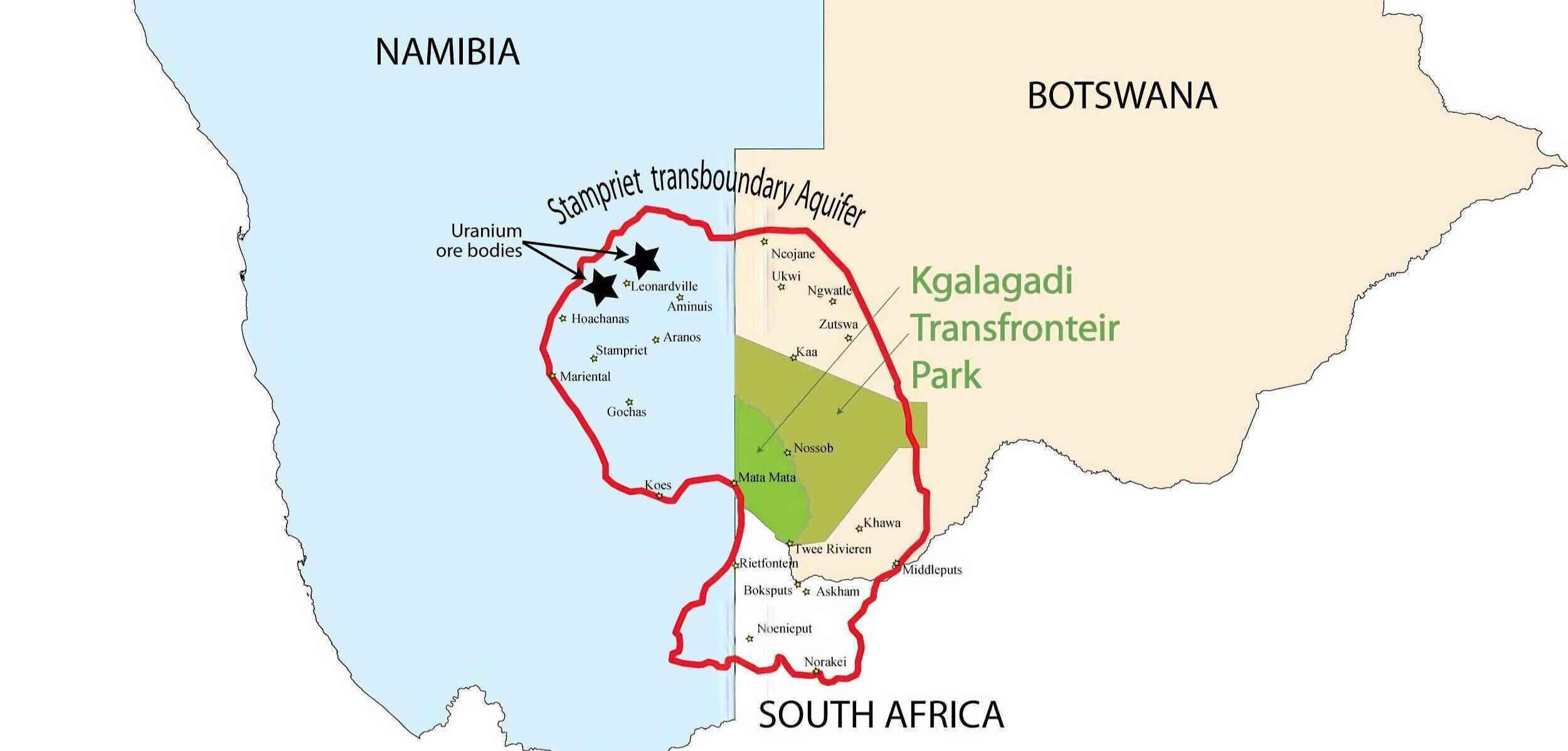
A Russian-owned mining company is on a mission to extract uranium using a method that is known to contaminate and poison underground water. The promise of short-term jobs puts at risk the long-term health of local communities and thousands of jobs in other sectors in Namibia as well as potential risk to health and jobs in neighbouring countries. It could also damage the entire economy of the Kalahari as well as that of many sectors across Namibia. Any government that cares about its people would not allow this mining operation to go ahead.
Namibia already produces uranium through conventional mining methods. The proposed mining operation near Leonardville in the Omaheke Region presents a totally different scenario. Instead of blasting rock to create an open-cast mine, the proposed new mine will use a method known as in situ leach mining.
What is uranium in situ leach mining?
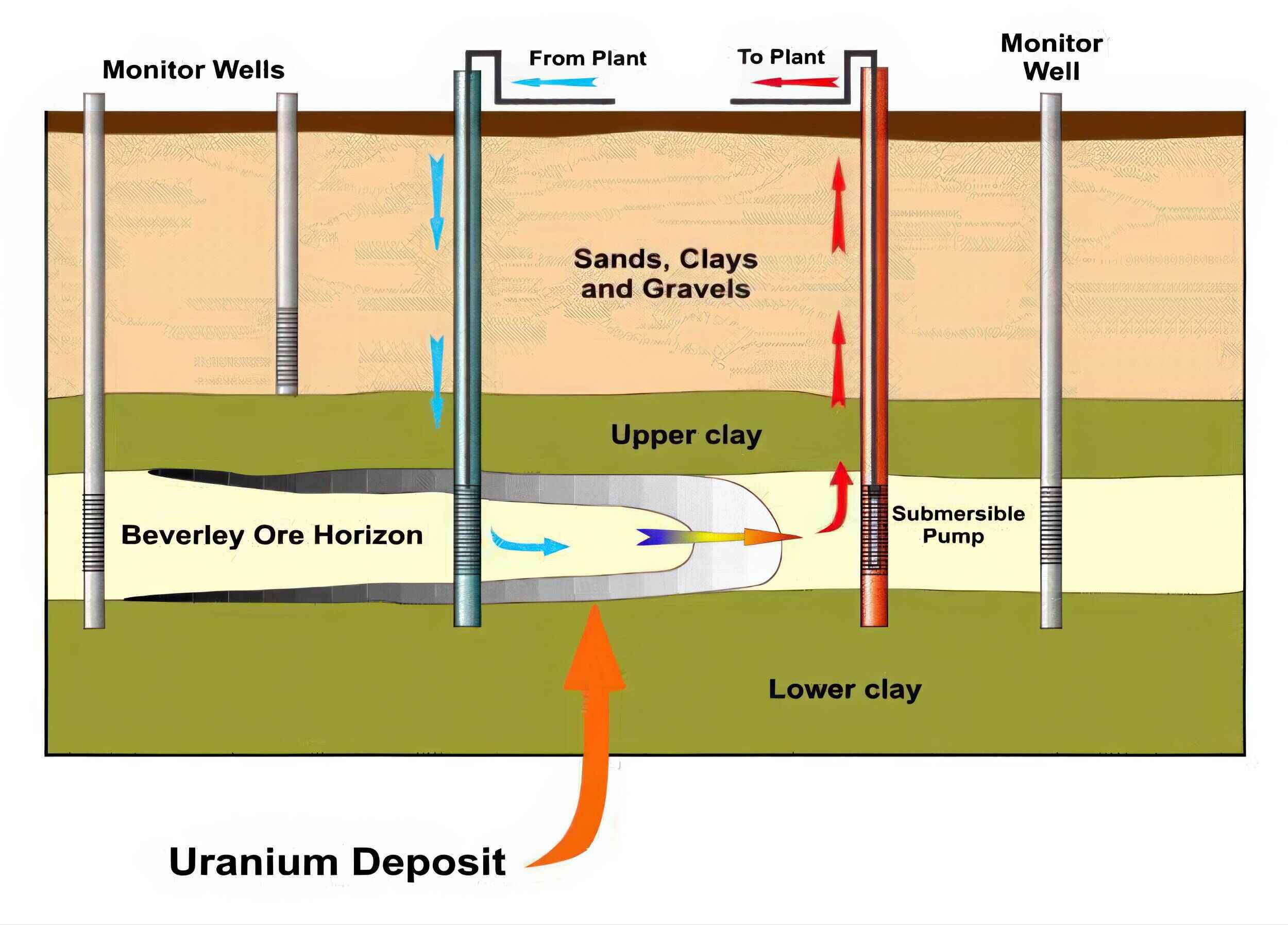
In situ leaching involves pumping a solution of corrosive chemicals into a sandstone aquifer that will dissolve uranium and other metals into the underground water body. This mine solution is then pumped from deep underground out of the aquifer using boreholes that are linked to an above-ground processing facility. Once the uranium is extracted, the water is recycled again and again, each time with more chemicals added.
Over the life of an in situ leach mine, thousands of injection and recovery boreholes are drilled at an average spacing of 20-30 metres apart. The chemicals dissolve radioactively unstable uranium particles (known as radionuclides) and heavy metals such as arsenic, cadmium and others. The fluids that are not pumped back into the aquifer are stored in lined dams to allow the water to evaporate, leaving radioactive waste.
While in situ leach mining disturbs the surface of the earth less than conventional mining, generates less radioactive dust that pose a threat to mineworkers and people living nearby, and is cheaper than open-cast mining, there is one huge concern – contamination of groundwater in the mined aquifer. It all happens far underground where the situation cannot be adequately controlled. Boreholes leak, equipment breaks down and mine solution escapes out of the mine area. Although monitoring boreholes are placed around the mining area to detect changes in underground water quality, little can be done about contaminated water that leaves the mining zone.
Uranium and other heavy metals are toxic to humans and animals. When they are present in high concentrations, as they are in the leach mining solution, underground water is rendered undrinkable and unusable for irrigating crops. If the water is used anyway, those drinking it are likely to suffer high rates of cancer, liver and kidney damage, among other health problems. Once an aquifer is polluted it might never be restored enough to provide drinkable water, even after decades of expensive treatment.
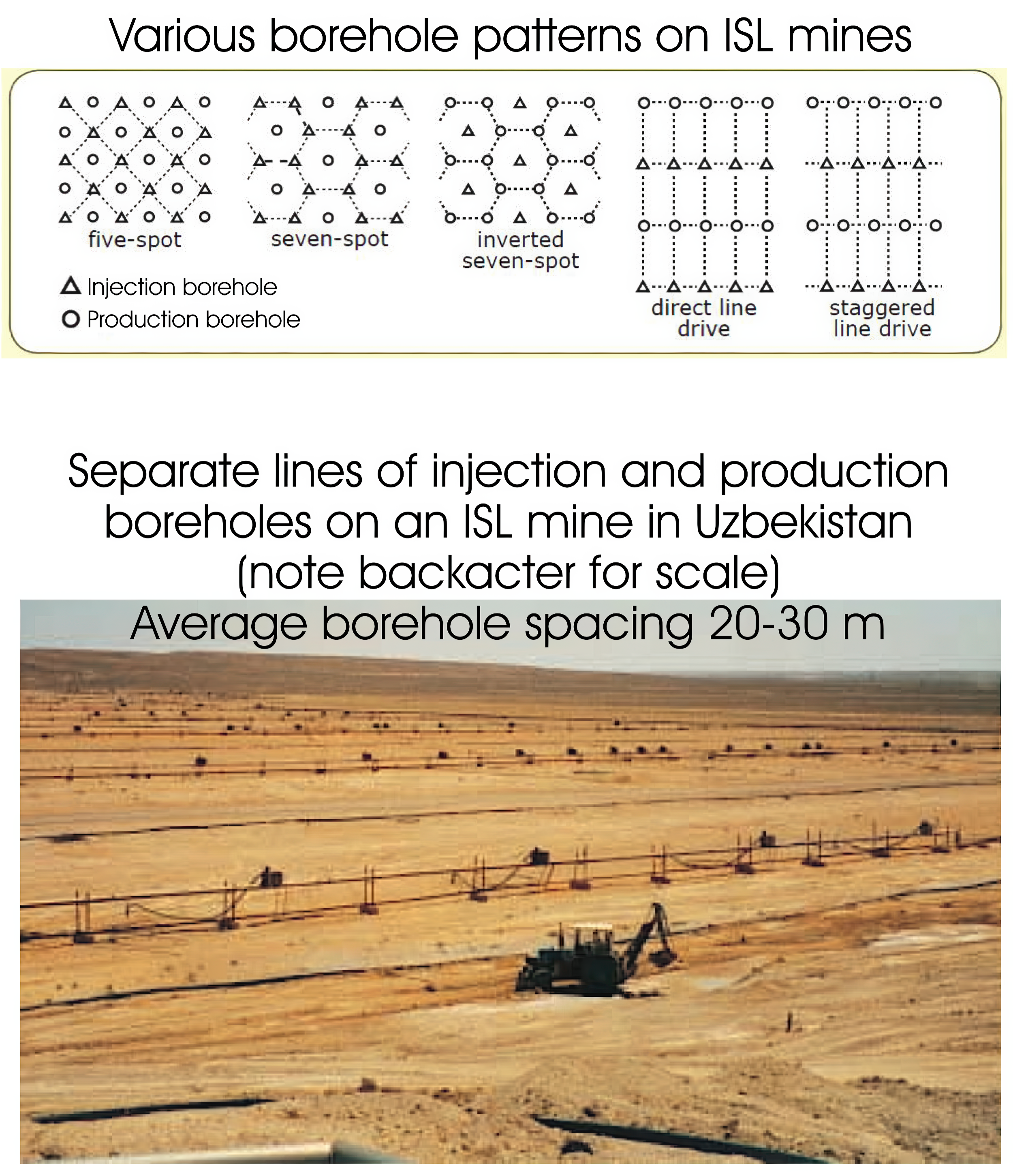
How do other countries regulate this mining practice?
Australia, the United States of America, and Kazakhstan all use in situ leaching to mine uranium. The approaches taken by these different countries yield lessons for Namibia, alongside detailed scientific studies of the particular aquifer that the proposed mine is targeting.
In Australia, leach mining is only allowed in water aquifers that produce such low-quality water that it cannot be used for human or animal consumption. The mining proponent also has to show that there is limited or no water flow from the leach mining area to other aquifers that may contain drinkable water. Underground water flows are measured prior to mining and monitored during operations to provide the necessary evidence and assurance. Finally, the mining company commits to restoring the underground water quality to the same levels as before the mine, which is possible within about a decade for water that was already of poor quality.
In the USA, mining proponents must apply for the aquifer they are going to use to be exempt from the Safe Drinking Water Act by proving that it is not currently being used or going to be used for drinking water. Their regulations require the water to be returned to pre-mining quality, but none of the mining companies have achieved this where the water was drinkable prior to mining. Seven of the eight operations have been reported and even fined for environmental violations, particularly relating to the contamination of groundwater beyond the mining area and surface spills.
Kazakhstan is the global leader in terms of the amount of uranium produced using in situ leach mining. It has a poor environmental track record in uranium mining from its Soviet days. It is also more difficult to obtain information on the environmental and health regulations that Kazakhstan employs today than in most western countries mining. The area of the country that is most used for uranium leach mining is sparsely populated, and it seems that most of the aquifers do not contain drinkable water.
The uranium mining company in Kazakhstan is state-owned, and the approach to post-mining water quality is based on self-restoration. Nothing is done to the contaminated water underground and it is claimed that the water will restore itself to its pre-mining quality over time. The evidence that self-restoration is effective in restoring mined groundwater to its pre-mining quality is questioned in many publications. Further, water samples taken at some post-mining sites report alpha and beta activity exceeding intervention levels for drinking water and exceedingly high radon concentrations that exceed permissible levels by an order of magnitude. Depending on local conditions, it is possible that it could take thousands of years for natural processes to restore water quality to its original condition. If left untreated, arsenic and cadmium levels could be thousands of times higher that drinking water standards. Arsenic can be absorbed by plants, leaving water unusable for irrigation.
Key concerns for Namibia
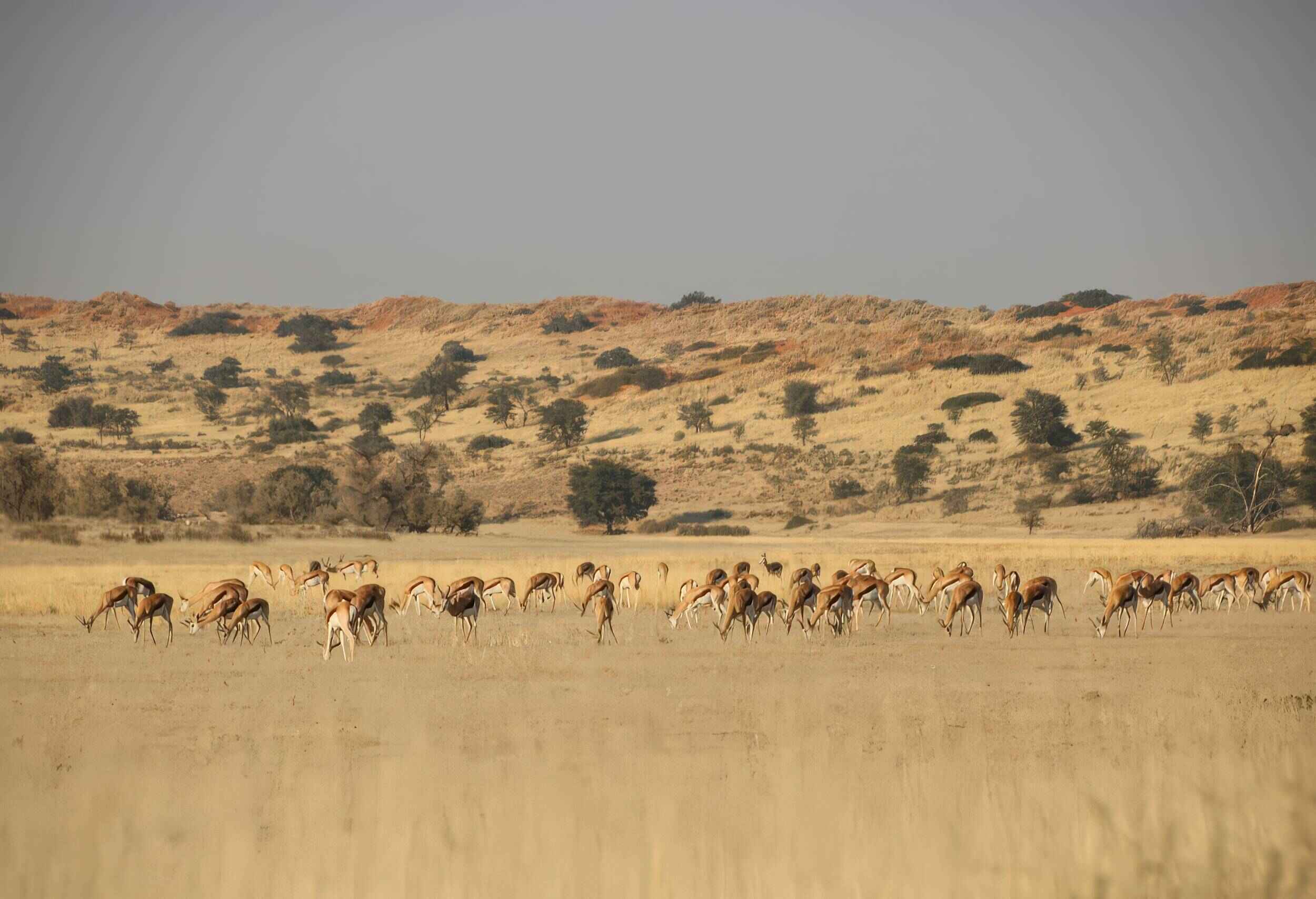
The situation in Namibia differs from the above examples in a number of critical respects. First, the aquifer that is being targeted – the Stampriet Artesian Basin – contains high-quality underground drinking water that is currently being used by local people, tourists, livestock, wildlife and for irrigation of both vegetables and fruit orchards. In this dry Kalahari ecosystem, no other sources of water are available for these purposes. It has duly been declared a water protection area as per section 85 read together with section 132 (deeming provision) of the Water Resources Management Act of 2013. Consequently, any form of pollution of the underground water is prohibited.
If the groundwater in this area is contaminated it is highly likely that such water quality deterioration will be long term – decades to centuries. The loss of such a valuable fresh water resource in a semi desert is to be avoided at all cost since the people and livestock will either have to move out or suffer severe health problems.
Besides health concerns, the region and Namibia will suffer economic damages. Irrigation schemes on farms would have to halt, since the toxins in the water would be transferred into the crops and harm consumers. Tourism would stop, and the collateral damage would extend to concerns about water safely across the whole country, harming meat and crop exports and tourism. The commercial activities in support of farming, tourism and urban settlement would be severely impacted, and the value of the land, both agricultural and urban, would collapse. The economic impacts of this, and the number of jobs lost, would be hundreds of times greater than any benefits to Namibia from the in situ uranium mining.
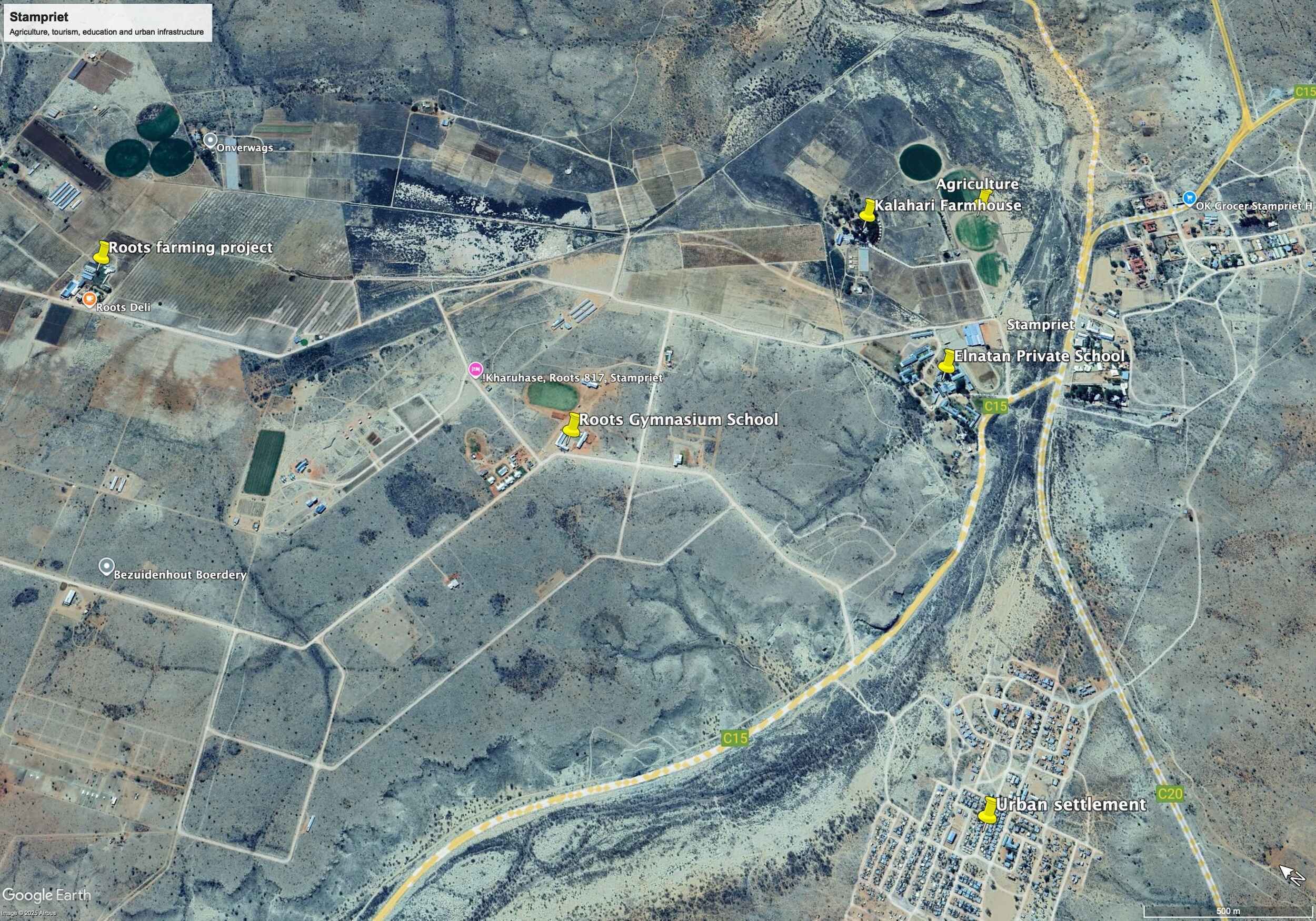
Second, this aquifer is a transboundary water resource that extends well beyond the proposed mining area and is closely linked to other aquifers, covering an estimated 6.5 million hectares (see map). The aquifer is used by freehold and communal farmers, several towns and villages in Namibia, and the Kgalagadi Transfrontier Conservation Area in Botswana and South Africa (see map at the start of the article).
Namibia is, as per the international law and protocols she has signed, obliged to consult her neighbours and seek consent for activities that could (and likely shall) have negative consequences for the whole water resource. Such consent has not yet been requested due to a lack of scientific data. However, learning from the operations in the USA, water contamination from leach mining should be expected. If any of the thousands of mining boreholes used to pump corrosive chemicals into and highly radioactive mine solution out of the target aquifer leak, it will contaminate the main aquifer and other aquifers.
Contamination of groundwater in Botswana and South Africa, arising from in situ leach mining of uranium in the Stampriet Basin in Namibia, approved by the Namibian government, would open huge claims of reparation from both the governments and private sectors of those two neighbouring countries, running into billions of dollars. The Russian mining company will probably have packed up and gone by then, so Namibia will be liable. The cost will fall not to the people in government now who make terrible, short-sighted decisions, perhaps incentivised by the Russians, but to future governments, people and the country.
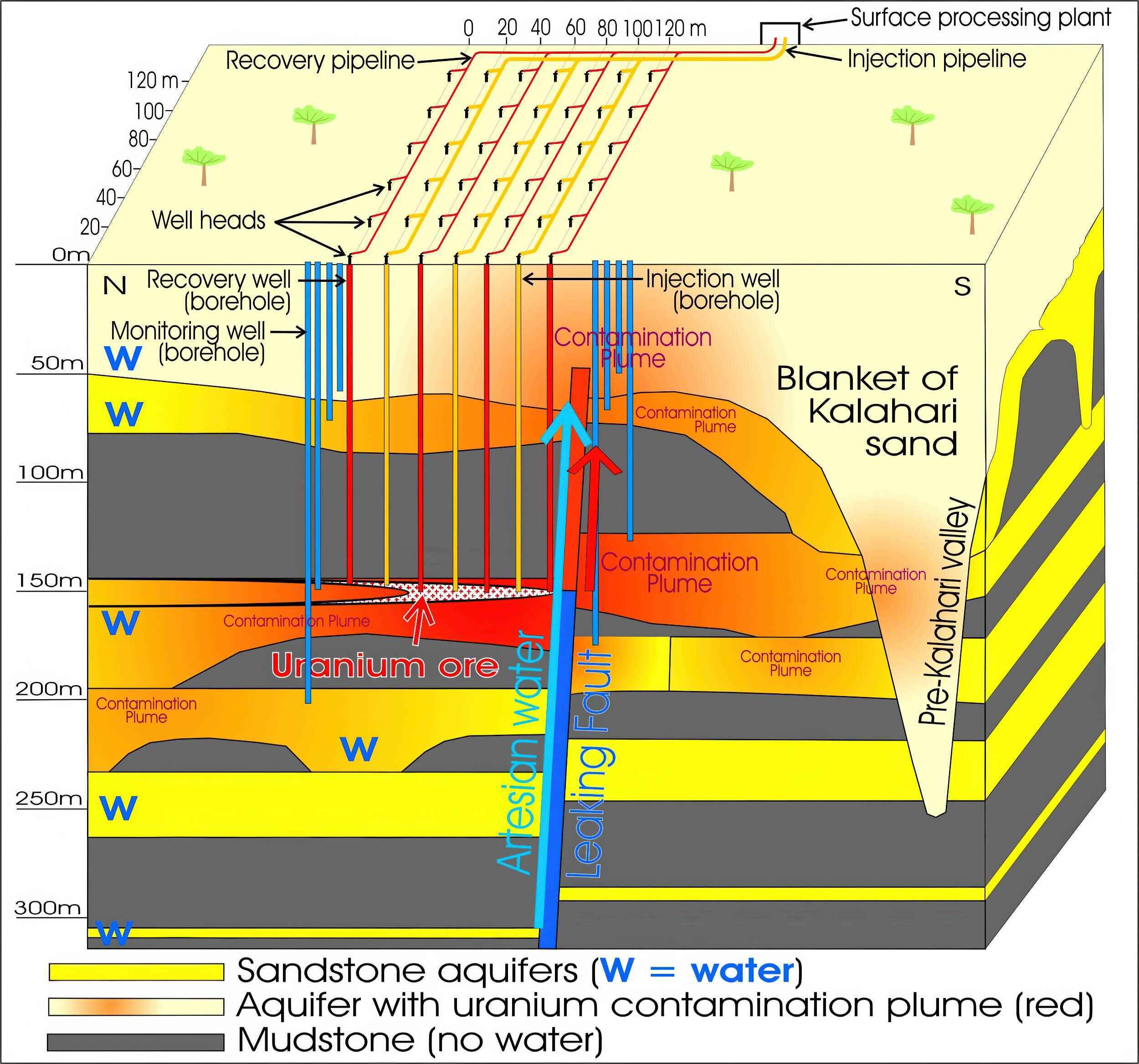
Third, the water in this aquifer is likely moving at much higher rates than aquifers that are not intensively used, such as those in the three countries mentioned above. The total amount of water used for irrigation alone is approximately 700 cubic metres of water per hour, 24 hours a day, all year long. This induces a huge rate of flow of the underground water for tens of kilometres. Such massive induced flow will draw water out of the leach mining area into the rest of the aquifer potentially contaminating large areas and rendering the water unusable. An independent scientific study is required to determine the exact rate at which this water moves and predict how the contaminated water could flow from the mining area to agricultural areas and villages.
If the conditions found in Namibia were in either Australia or the USA, their respective environmental authorities would have thrown out the application to mine automatically. Uranium leach mining and good quality drinking water are simply not compatible. The health risks associated with radioactivity and the heavy metals released in the mining process are simply not worth it.
The government of Kazakhstan is currently partnering with Russian firm Rosatom to revive its nuclear power sector. This same firm is the parent body of Headspring Investments, which is proposing the leach mine in Namibia. This company, which is also active in Kazakhstan, is apparently proposing the controversial and unproven “self-restoration” method of restoring water for the Stampriet Basin in Namibia.
Namibian government regulators and local authorities have been on Russia-sponsored trips to Kazakhstan and Russia to allay their fears about water safety, with the Kazakh officials assuring Namibians that the water is fine to drink. Yet the mining area there is a Steppe desert with few people and little is known in the West about the quality of the water in the aquifers being mined.
If the intention is to apply self-restoration to the Stampriet drinking-water aquifer after in situ leach mining ceases, it shows a lack of concern for Namibians using the water from the Stampriet Artesian Basin and should raise red flags. Based on the USA findings, it is clear that the water cannot be returned to pre-mining quality, even if some restoration methods are applied. The fact that the water from the Stampriet Artesian Basin is high quality drinking water that is essential for human and animal life in this vast area should prohibit leach mining, regardless of restoration promises.
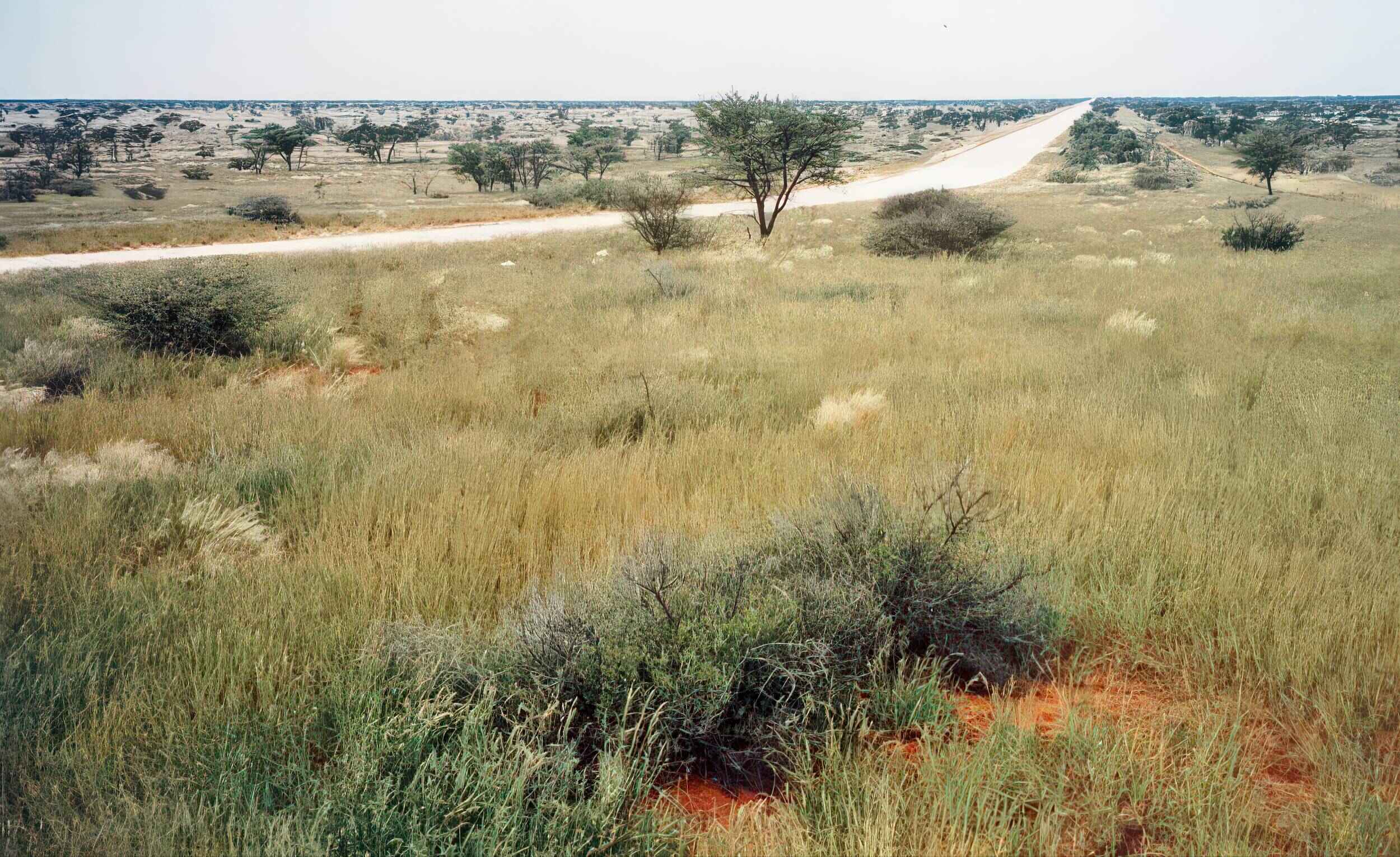
Mining, nuclear power and economic development are good, but not at this cost
Uranium mining and nuclear power are not inherently problematic. Namibia already produces a significant percentage of the world’s uranium using conventional mining methods, and this sector contributes significantly to our GDP. Developing nuclear power in Namibia is also a good idea, as it is a clean and safe source of energy when it is managed properly.
Creating jobs and boosting the economy of the impoverished Omaheke Region are important priorities. New industries that do not result in the long-term poisoning of critical water supplies are therefore welcome in this area. We simply do not think that 500 short-term jobs are worth contaminating the only water that these employees, their families and their great-grandchildren have to drink, while putting at risk many thousands of jobs that already exist in the area, as well as future jobs that could be created by more appropriate developments.
While some mining companies may not care for the long-term health and well-being of Namibians, the Namibian authorities should care. That is one of their most important priorities. Local support for the mine is easy to generate with a few donations that represent small change for the company, but are seen as wonderful in the eyes of an impoverished community. These small gifts, whether to the community or the local authorities, should not cloud our judgment on the overall plan. The groundwater is there. Create the necessary jobs by developing irrigation farms and other appropriate enterprises in the Leonardville area that have long-term sustainability, not in-situ leach mining.
If there is still doubt regarding the potential impacts of this mine, Namibia should invite scientists and regulators involved in in situ leach mining from countries where international best practice is followed (e.g. Australia) to assess this proposal. Independent hydrogeological studies that measure the rate of groundwater flow in this aquifer are also necessary to reveal how contamination would spread in this area. Until such studies are done, Namibia should follow current best practice and prevent any uranium leach mining in aquifers that are used by local people, tourists, livestock, wildlife and crop farmers.
For articles on similar topics, please click one of the following options:
If you enjoyed this page, then you might also like:
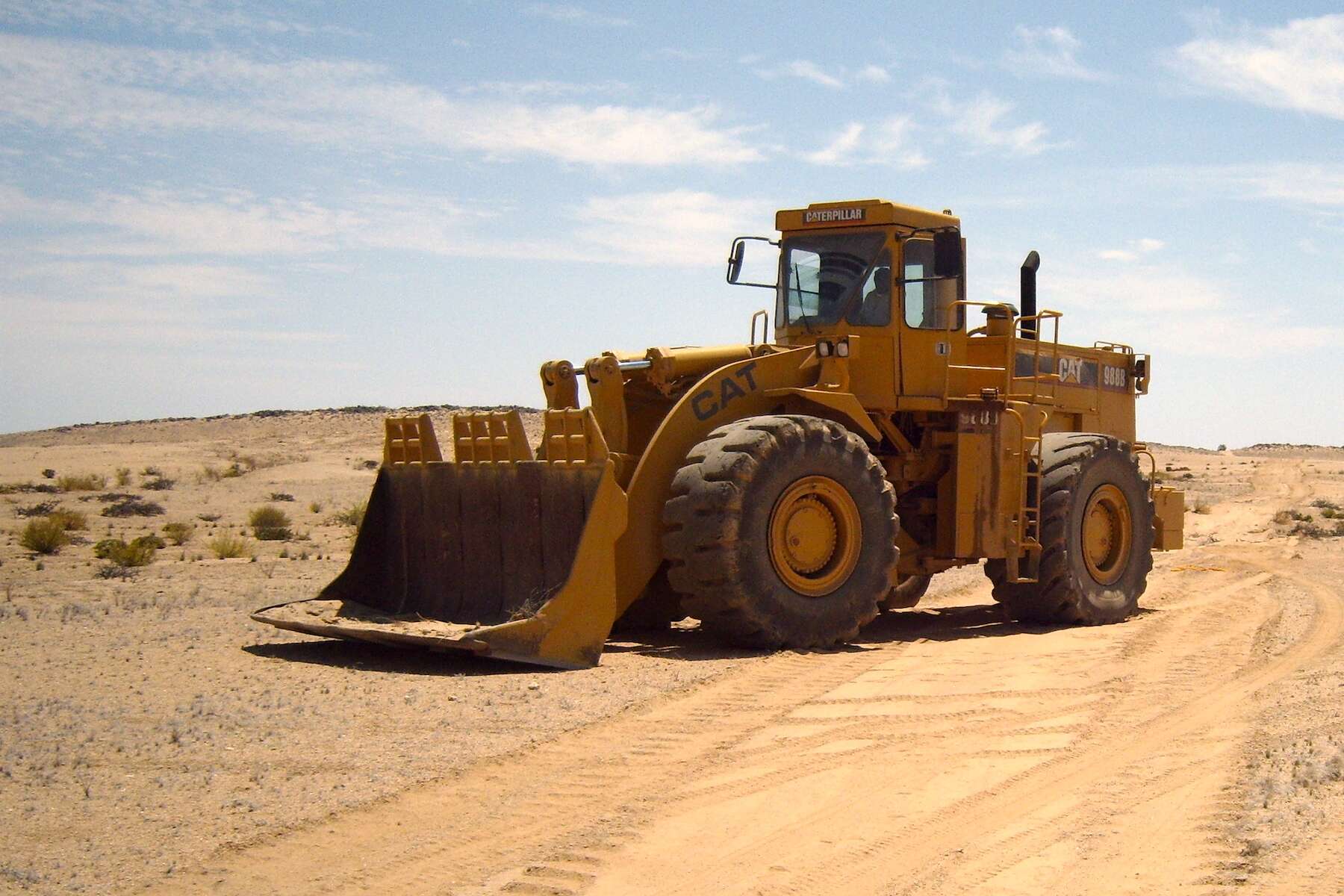
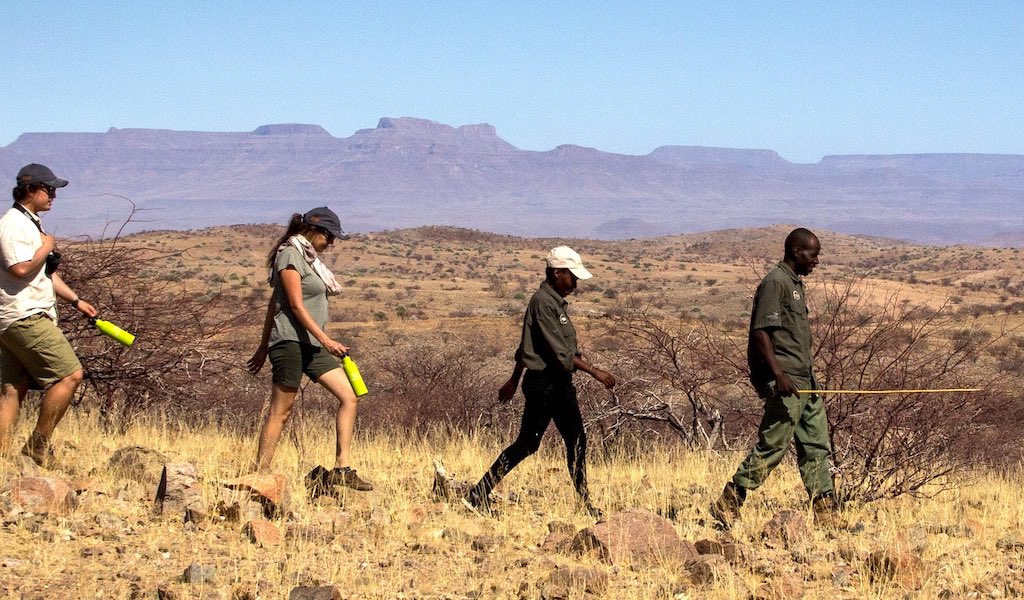
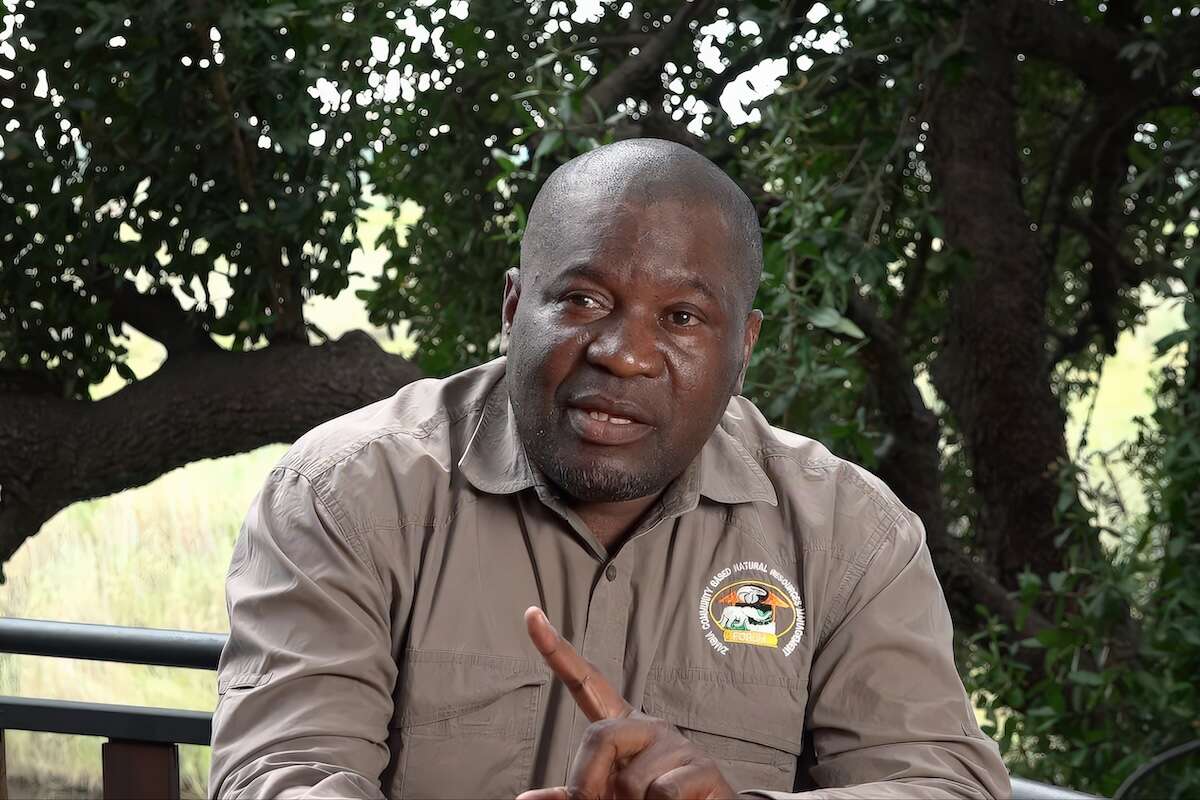
We use cookies to monitor site usage and to help improve it. See our Privacy Policy for details. By continuing to use the site, you acknowledge acceptance of our policy.